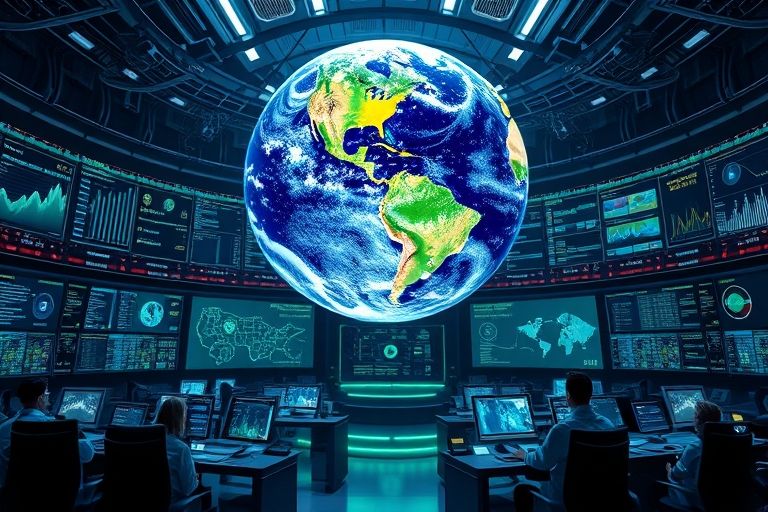The Importance of AI in Climate Monitoring and Prediction
Climate change is one of the most significant challenges faced by the world today. With increasing greenhouse gas emissions, rising temperatures, and extreme weather events, it is becoming more crucial to monitor and predict climate patterns accurately. Artificial Intelligence (AI) has emerged as a powerful tool in climate monitoring and prediction, helping scientists to analyze vast amounts of data and extract valuable insights. In this article, we will explore the role of AI in climate monitoring and prediction, including examples, statistics, and facts.
How AI is Used in Climate Monitoring and Prediction
AI can be used in various ways to monitor and predict climate patterns. One of the primary applications of AI is in weather forecasting. AI algorithms can analyze data from various sources, such as weather satellites, ground-based sensors, and radar systems, to predict weather patterns accurately. These predictions can help in disaster management and mitigation efforts.
Another way AI is used in climate monitoring is through the analysis of environmental data. AI algorithms can analyze data from various sources, including remote sensors, to monitor environmental changes such as deforestation, desertification, and sea-level rise. These insights can help policymakers make informed decisions about climate change mitigation and adaptation efforts.
Examples of AI in Climate Monitoring and Prediction
One example of AI in climate monitoring is the use of machine learning algorithms to analyze satellite data. NASA's Earth Observing System Data and Information System (EOSDIS) uses AI algorithms to analyze satellite data to monitor climate patterns such as sea-level rise, ice-sheet coverage, and land use changes.
Another example of AI in climate monitoring is the use of predictive analytics to forecast extreme weather events. The European Centre for Medium-Range Weather Forecasts (ECMWF) uses AI algorithms to analyze weather data from various sources to predict extreme weather events such as hurricanes, cyclones, and typhoons. These predictions can help in disaster management and mitigation efforts.
Statistics and Facts about AI in Climate Monitoring and Prediction
- According to a report by the World Economic Forum, AI can help reduce greenhouse gas emissions by up to 15% by 2030.
- The European Space Agency (ESA) is using AI to analyze data from its Sentinel satellites to monitor environmental changes such as deforestation and desertification.
- The National Oceanic and Atmospheric Administration (NOAA) uses AI algorithms to forecast extreme weather events, including hurricanes and tornadoes.
How to Implement AI in Climate Monitoring and Prediction
Implementing AI in climate monitoring and prediction requires a significant investment in technology, infrastructure, and expertise. However, it can provide valuable insights that can help in climate change mitigation and adaptation efforts. To implement AI in climate monitoring and prediction, organizations need to:
- Invest in data collection and analysis infrastructure
- Develop AI algorithms that can analyze large amounts of data
- Train personnel in AI and data analysis
- Collaborate with other organizations to share data and insights
Conclusion
In conclusion, AI has emerged as a powerful tool in climate monitoring and prediction, helping scientists to analyze vast amounts of data and extract valuable insights. AI can help in weather forecasting, environmental monitoring, and predicting extreme weather events. By investing in AI technology and expertise, organizations can make more informed decisions about climate change mitigation and adaptation efforts.
